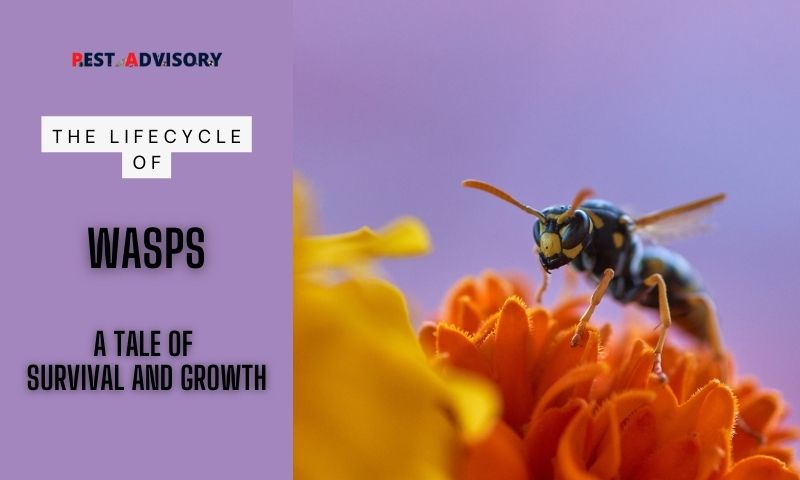Welcome to the fascinating world of wasps, where the story of survival and growth is woven into the intricate web of their life cycle.
These often misunderstood insects are a vital part of our ecosystem, playing a crucial role in pollination and pest control.
The wasp lifecycle is a complex and well-coordinated process, involving everything from queen wasps controlling the sex of their offspring to worker wasps tirelessly caring for the young.
In this article, we’ll take a closer look at the stages of the wasp lifecycle, exploring the amazing adaptations that enable these insects to thrive and survive.
So, let’s dive in and uncover the tale of the wasp lifecycle, a story of resilience and perseverance that’s sure to leave you in awe.
What is the Lifespan of Wasps?
Wasps have varying lifespans depending on their species and role within the colony. Worker wasps live for 12-22 days, while queen wasps can live up to a year.
Worker wasps’ short lives are due to the demands of their job, while queens have a more sedentary lifestyle. Environmental factors and species differences can also affect their lifespan.
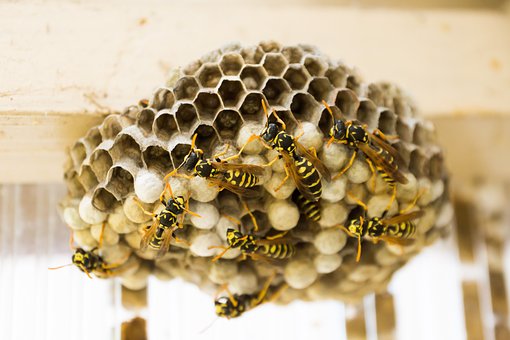
Life Cycle Of Wasps
The life cycle of wasps typically consists of four stages: egg, larva, pupa, and adult. Here’s a breakdown of each stage:
Egg Stage
The wasp life cycle begins with a fertilized female wasp laying eggs. These eggs are tiny and are typically laid in individual cells within the nest.
Larva Stage
After a few days, the eggs hatch into larvae. The larvae are white and grub-like in appearance and are fed by the worker wasps. They grow quickly during this stage and molt several times.
Pupa Stage
After the larval stage, the wasp enters the pupa stage. During this time, the wasp does not move much and undergoes metamorphosis. The pupal stage can last anywhere from a few days to several months, depending on the species.
Adult Stage
Once the metamorphosis is complete, the wasp emerges as an adult. At this point, it is fully developed and ready to participate in colony activities such as foraging for food and building the nest. The queen will continue to lay eggs throughout the summer, and the cycle will repeat.
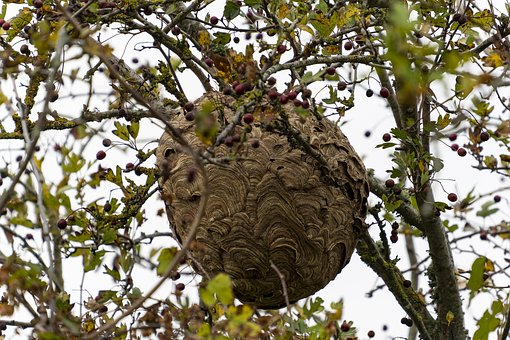
Growth Pattern Of Wasps Colony
The life cycle or growth pattern of a wasp colony starts in late winter with a new wasp queen and finishes in winter with the demise of the present time wasps’ colony queen.
Every colony has a similar caste framework: one egg-laying queen wasp, fertile female working wasps, and some male wasps.
Spring – Beginning of a new colony
- A fertile female wasps queen comes out from winter hibernation to track down a reasonable spot to build a wasps’ nest.
- Every wasp goes through a complete transformation from an egg, hatchlings, and pupa to a mature wasp in the cell of the nest.
- Wasp nests are made up of bitten wood blended in with their saliva, known as wood pulp.
- The queen wasp builds a couple of cells and lays her eggs inside, which acts to be her first working wasp. These wasps take control of the nest-building process and search for food for the coming hibernation period.
- The wasp queen turns into a full-time egg-laying insect afterward and delivers 200-300 eggs each day.
Summer – The extension of the colony
- The wasp’s colony and the nest develop at a fast rate – in spring there are around 5,000 wasps in the nest, while in the peak of summer, there can be up to 10,000 wasps!
- The nests develop from the size of a golf ball to a football as the number of these bugs in the colony grows.
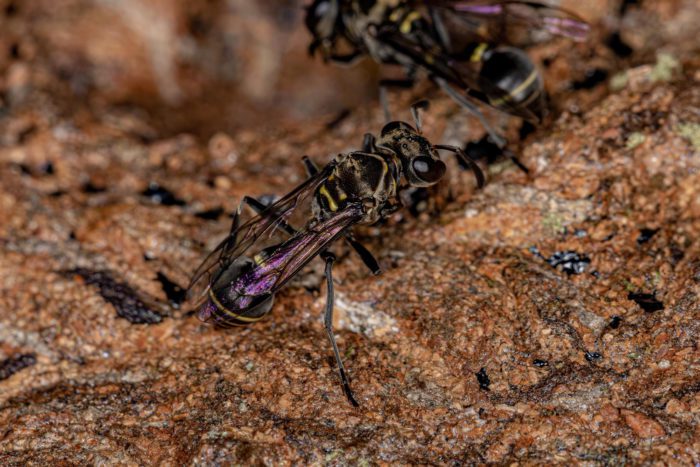
Late Summer – the peak of settlement within the colony
- Towards the end of summer, the development of the colony peaks, and the queen wasp produces eggs that form into new queens and fertile female wasps and male wasps.
Autumn season – the decline of wasps’ colony
- As the climate cools, the present wasp queen starts moving towards the finish of her life and the social design inside the colony starts to separate.
- The leftover wasps have no obligation to the home and enjoy sweet food items, like leftover fruit, products of the soil, etc.
- The new wasp queen leaves the nest and is fertilized by male wasps, before tracking down an ideal spot to hibernate overwinter until the next year.
Late Autumn/Winter – end of the colony
- The whole nest and every member of the wasp’s colony dies.
Interesting Facts about Wasp’s Lifecycle
- Wasp life cycle timing is linked to seasonal changes
- Queen wasps can control the sex of offspring by fertilizing eggs
- Some wasp species can reproduce asexually
- Worker wasps care for developing larvae by feeding and grooming them
- Pupal stage length varies based on temperature and humidity
- Adult wasps typically live for a few weeks to a few months
- The social wasp life cycle is highly organized with specific roles for each individual
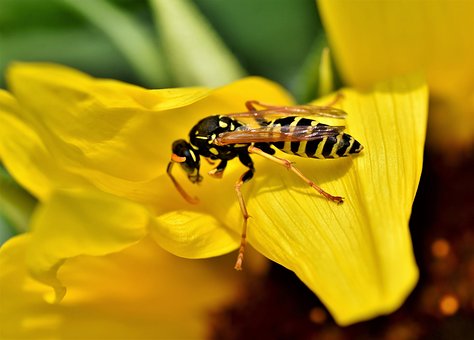
Frequently Asked Questions
How often do wasps reproduce?
Queen wasps typically mate only once a year, in the early spring. After mating, they begin to build their nests and lay eggs.
They can continue to reproduce throughout the summer, laying up to 100 eggs per day in some species, while worker wasps do not mate or reproduce.
When do wasps come out?
The specific timing of wasp emergence can vary depending on the species and the location.
In cooler climates, wasps may not emerge until late spring or early summer when temperatures consistently reach around 50°F (10°C). In warmer regions, wasps may emerge earlier in the year.
What time of year do wasps build nests?
The exact timing of nest building depends on many factors, including temperature, food availability, and weather conditions.
In warmer regions, wasps may start building nests as early as March or April.
In cooler climates, nest building may not begin until May or June when temperatures are consistently warm enough for the queens to begin laying eggs.
When are wasps most active?
Wasps are generally most active during the warmer months of the year when temperatures are optimal for peak wasp activity.
In many parts of the world, wasps start to become more active in April and May as the weather begins to warm up.
They continue to be active throughout the summer and early fall until the temperatures start to drop again.
How many wasps live in a nest?
The number of wasps in a nest depends on the species and age of the nest. Paper wasp colonies are small, with less than 200 wasps, and only last one season.
Social wasps, like yellow jackets and common wasps, can have larger nests with a few hundred to several thousand individuals, with some having up to 15,000. It’s important to be cautious around wasp nests, especially large ones.
Final Words
The life cycle of wasps is a complex and fascinating process that plays an essential role in nature.
From the tiny worker wasps caring for the young to the queen wasp overseeing the colony’s survival, each member of the nest plays a crucial part in the colony’s success.
Understanding the different stages of the wasp life cycle can help us appreciate these amazing insects and the vital role they play in our ecosystem.
While they may be a nuisance to some, it’s important to remember that wasps are an integral part of our environment, and we must do our best to coexist with them safely and respectfully.
